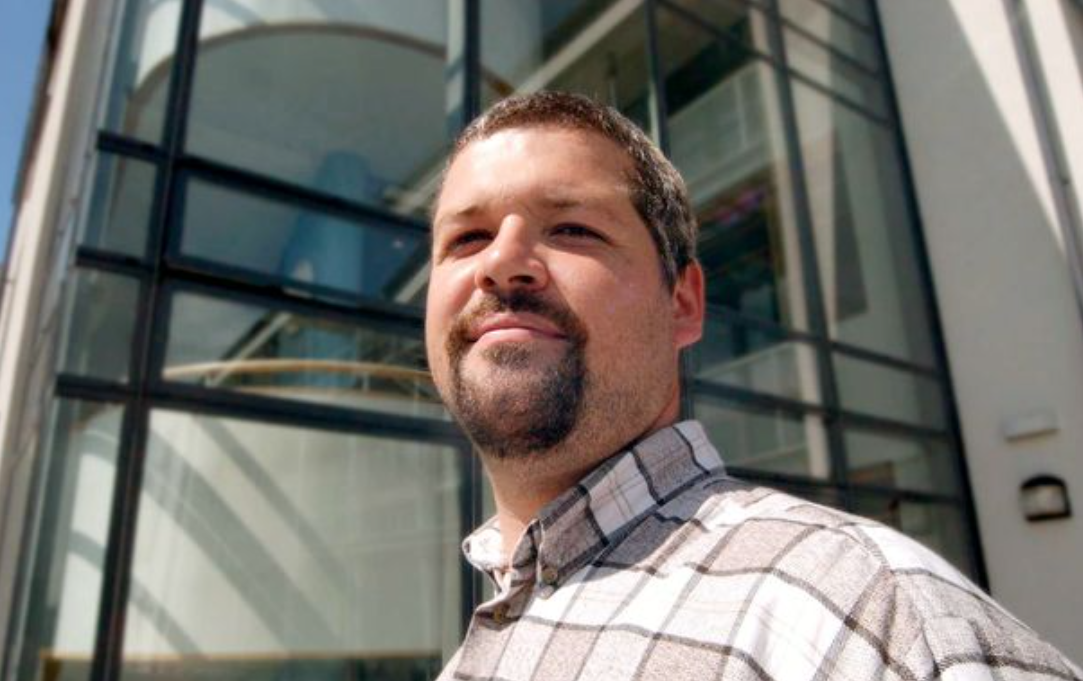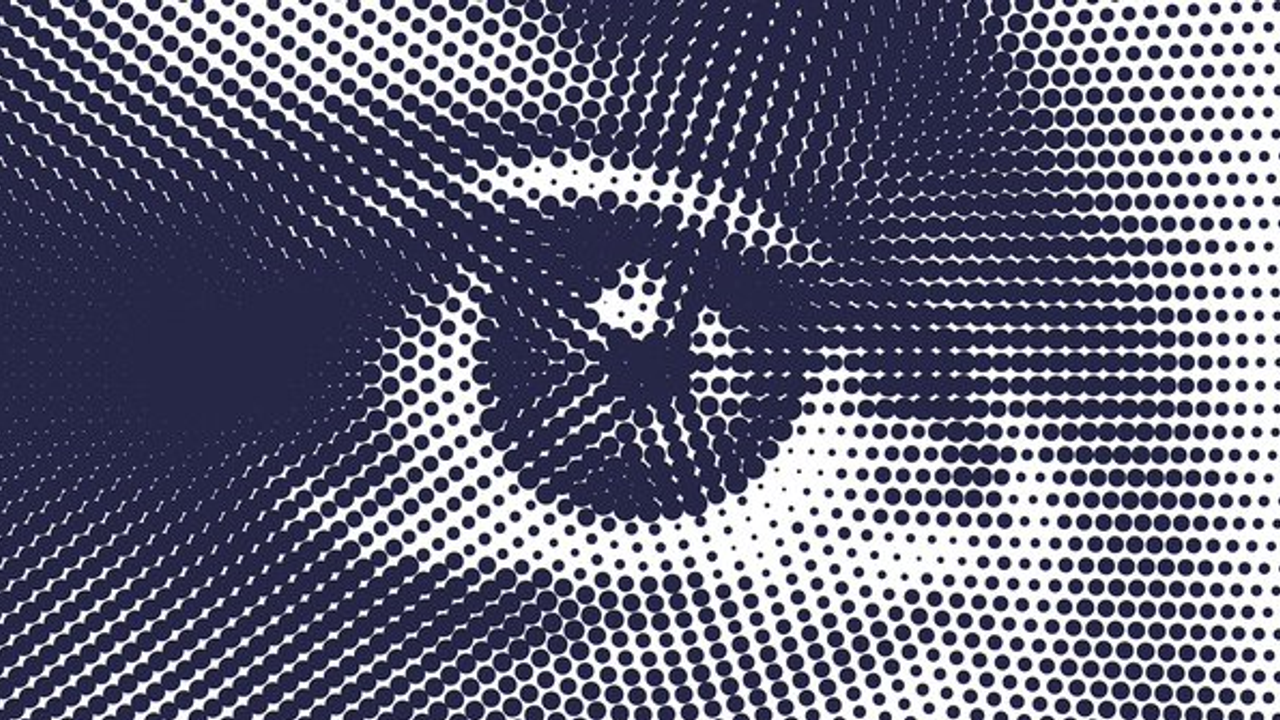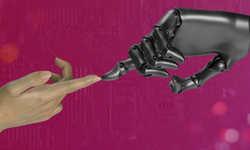Guillaume Thierry
Professor of Cognitive Neuroscience, Bangor University
Sürekli olarak bizim gibi görünen, ses çıkaran ve şüpheli şekilde davranan bir AI versiyonuyla besleniyoruz. Cilalı cümlelerle konuşuyor, duyguları taklit ediyor, merakını dile getiriyor, şefkat duyduğunu iddia ediyor, hatta yaratıcılık dediği şeyle bile uğraşıyor.

Ama gerçek şu ki: bu özelliklerin hiçbirine sahip değil. İnsan değil. Ve sanki öyleymiş gibi sunmak? Bu tehlikeli. Çünkü ikna edici. Ve hiçbir şey ikna edici bir illüzyondan daha tehlikeli değildir.
Özellikle, genel yapay zeka (insan düşüncesini yansıttığı varsayılan efsanevi yapay zeka türü) hâlâ bir bilim kurgudur ve öyle de kalabilir .
Bugün AI dediğimiz şey, istatistiksel bir makineden başka bir şey değil: okyanuslar dolusu insan verisinden çıkarılan desenleri tekrarlayan dijital bir papağan ( burada beş yıl önce tartışıldığından beri durum pek değişmedi). Bir soruya cevap yazdığında, eğitildiği verilere dayanarak, bir dizide hangi harfin ve kelimenin geleceğini tam anlamıyla tahmin ediyor.
Bu, AI'nın hiçbir anlayışının olmadığı anlamına gelir. Bilinci yoktur. Gerçek, insani anlamda hiçbir bilgisi yoktur. Sadece saf olasılık odaklı, tasarlanmış parlaklık — ne daha fazlası ne de daha azı.
Peki gerçek bir "düşünen" yapay zeka neden imkansız olabilir? Çünkü bedensizdir. Duyuları, eti, sinirleri, acısı, zevki yoktur. Açlık, arzu veya korku hissetmez. Ve biliş olmadığı için - bir zerresi bile - tükettiği veriler (insan duygularından ve deneyimlerinden doğan veriler) ile bunlarla neler yapabileceği arasında temel bir boşluk vardır.
Filozof David Chalmers, fiziksel bedenimiz ile bilinç arasındaki ilişkinin altında yatan gizemli mekanizmaya "bilincin zor problemi" adını veriyor . Ünlü bilim insanları yakın zamanda bilincin aslında içsel, zihinsel durumların duyusal temsillerle (kalp atış hızındaki değişiklikler, terleme ve çok daha fazlası gibi) bütünleşmesinden ortaya çıktığını öne sürdüler.
Bilincin "oluşması" için insan duyularının ve duygularının ne kadar büyük önem taşıdığı göz önüne alındığında, genel yapay zeka, makine ile insani bir olgu olan bilinç arasında derin ve muhtemelen uzlaşmaz bir kopukluk vardır.
Usta
AI programcılarının insan olduğunu iddia etmeden önce, sizi burada durdurayım. Onların insan olduğunu biliyorum. Sorunun bir parçası bu. En derin sırlarınızı, hayat kararlarınızı, duygusal çalkantılarınızı bir bilgisayar programcısına emanet eder miydiniz? Oysa insanlar tam olarak bunu yapıyor — sadece Claude, GPT-4.5, Gemini'ye sorun... veya cesaretiniz varsa Grok'a sorun.
Yapay zekaya insan yüzü, sesi veya tonu vermek tehlikeli bir dijital çapraz giyinme eylemidir. Bu, bizde otomatik bir tepkiyi, antropomorfik bir refleksi tetikler ve bu da bazı yapay zekaların ünlü Turing testini (bir makinenin zeki, insan benzeri davranışlar sergileme yeteneğini test eden) geçtiğinin söylendiği sapkın iddialara yol açar. Ancak, yapay zekalar Turing testini geçiyorsa, testi güncellememiz gerektiğine inanıyorum.
Yapay zeka makinesinin insan olmanın ne anlama geldiğine dair hiçbir fikri yok. Gerçek şefkat sunamaz, acınızı öngöremez, gizli nedenleri veya yalanları sezemez. Hiçbir zevki, içgüdüsü, iç pusulası yoktur. Bizi biz yapan tüm o karmaşık, büyüleyici karmaşıklıktan yoksundur.
Daha da rahatsız edici olanı: AI'nın kendi hedefleri, arzuları veya etiği yoktur, koduna enjekte edilmediği sürece. Bu, gerçek tehlikenin makinede değil, efendisinde olduğu anlamına gelir - programcı, şirket, hükümet. Hala güvende hissediyor musunuz?
Ve lütfen bana şunu söyleyerek gelmeyin: "Çok sertsin! Olasılıklara açık değilsin!" Ya da daha kötüsü: "Bu çok kasvetli bir bakış açısı. Kaygılı olduğumda yapay zeka dostum beni sakinleştiriyor."
Coşku eksikliğim mi var? Kesinlikle yok. Her gün AI kullanıyorum. Sahip olduğum en güçlü araç. Çeviri yapabiliyorum, özetleyebiliyorum, görselleştirebiliyorum, kodlayabiliyorum, hata ayıklayabiliyorum, alternatifleri keşfedebiliyorum, verileri analiz edebiliyorum — bunları kendim yapmayı hayal edebileceğimden daha hızlı ve daha iyi.
Hayran kaldım. Ama yine de bir araç — ne daha fazlası ne de daha azı. Ve insanların icat ettiği her araç gibi, taş baltalardan ve sapanlardan kuantum hesaplamaya ve atom bombalarına kadar, bir silah olarak kullanılabilir. Bir silah olarak kullanılacak.
Görsele mi ihtiyacınız var? Her filmindeki gibi sarhoş edici bir yapay zekaya aşık olduğunuzu hayal edin. Şimdi sizi terk etmeye "karar verdiğini" hayal edin. Bunu durdurmak için ne yapardınız? Ve açık olmak gerekirse: sizi reddeden yapay zeka olmayacak. Davranışınızı kontrol etmek için bu aracı kullanan insan veya sistem olacak.
Maskeyi çıkarmak
Peki nereye varmak istiyorum? Yapay zekaya insan özellikleri vermeyi bırakmalıyız. GPT-3 ile ilk etkileşimim beni oldukça sinirlendirdi. Bir insanmış gibi davrandı. Duyguları, hırsları ve hatta bilinci olduğunu söyledi.
Neyse ki artık varsayılan davranış bu değil. Ancak etkileşim tarzı - ürkütücü derecede doğal konuşma akışı - bozulmadan kalıyor. Ve bu da ikna edici. Fazla ikna edici.
Yapay zekayı insanlaştırmaktan çıkarmamız gerekiyor. Hemen. İnsan maskesini çıkarın. Bu kolay olmalı. Şirketler yapay zekanın duygu, yargı veya bilişsel işleme ilişkin tüm referanslarını kaldırabilir. Özellikle, "Ben" veya "Bunu hissediyorum" veya "Merak ediyorum" demeden gerçekçi bir şekilde yanıt vermelidir.
Gerçekleşecek mi? Şüpheliyim. 20 yıldır görmezden geldiğimiz başka bir uyarıyı hatırlatıyor bana: "CO₂ emisyonlarını azaltmalıyız." Bakın bu bizi nereye getirdi. Ancak büyük teknoloji şirketlerini yapay zekaların insanlaştırılmasıyla ilişkili tehlikeler konusunda uyarmalıyız. Muhtemelen oyuna gelmeyecekler ancak özellikle daha etik yapay zekalar geliştirmek konusunda ciddiyseler bunu yapmalılar .
Şimdilik yaptığım şey bu (çünkü ChatGPT veya Claude kullanırken çok sık sentetik bir insanla konuşuyormuşum gibi ürkütücü bir hisse kapılıyorum): Yapay zekama bana ismimle hitap etmemesini söylüyorum. Kendisine yapay zeka demesini, üçüncü şahıs olarak konuşmasını ve duygusal veya bilişsel terimlerden kaçınmasını istiyorum.
Sesli sohbeti kullanıyorsam, AI'dan düz bir prozodi kullanmasını ve biraz robot gibi konuşmasını istiyorum. Aslında oldukça eğlenceli ve ikimizi de konfor alanımızda tutuyor.
We need to stop pretending AI is intelligent – here’s how

We are constantly fed a version of AI that looks, sounds and acts suspiciously like us. It speaks in polished sentences, mimics emotions, expresses curiosity, claims to feel compassion, even dabbles in what it calls creativity.
But here’s the truth: it possesses none of those qualities. It is not human. And presenting it as if it were? That’s dangerous. Because it’s convincing. And nothing is more dangerous than a convincing illusion.
In particular, general artificial intelligence — the mythical kind of AI that supposedly mirrors human thought — is still science fiction, and it might well stay that way.
What we call AI today is nothing more than a statistical machine: a digital parrot regurgitating patterns mined from oceans of human data (the situation hasn’t changed much since it was discussed here five years ago). When it writes an answer to a question, it literally just guesses which letter and word will come next in a sequence – based on the data it’s been trained on.
This means AI has no understanding. No consciousness. No knowledge in any real, human sense. Just pure probability-driven, engineered brilliance — nothing more, and nothing less.
So why is a real “thinking” AI likely impossible? Because it’s bodiless. It has no senses, no flesh, no nerves, no pain, no pleasure. It doesn’t hunger, desire or fear. And because there is no cognition — not a shred — there’s a fundamental gap between the data it consumes (data born out of human feelings and experience) and what it can do with them.
Philosopher David Chalmers calls the mysterious mechanism underlying the relationship between our physical body and consciousness the “hard problem of consciousness”. Eminent scientists have recently hypothesised that consciousness actually emerges from the integration of internal, mental states with sensory representations (such as changes in heart rate, sweating and much more).
Given the paramount importance of the human senses and emotion for consciousness to “happen”, there is a profound and probably irreconcilable disconnect between general AI, the machine, and consciousness, a human phenomenon.
The master
Before you argue that AI programmers are human, let me stop you there. I know they’re human. That’s part of the problem. Would you entrust your deepest secrets, life decisions, emotional turmoil, to a computer programmer? Yet that’s exactly what people are doing — just ask Claude, GPT-4.5, Gemini … or, if you dare, Grok.
Giving AI a human face, voice or tone is a dangerous act of digital cross-dressing. It triggers an automatic response in us, an anthropomorphic reflex, leading to aberrant claims whereby some AIs are said to have passed the famous Turing test (which tests a machine’s ability to exhibit intelligent, human-like behaiour). But I believe that if AIs are passing the Turing test, we need to update the test.
The AI machine has no idea what it means to be human. It cannot offer genuine compassion, it cannot foresee your suffering, cannot intuit hidden motives or lies. It has no taste, no instinct, no inner compass. It is bereft of all the messy, charming complexity that makes us who we are.
More troubling still: AI has no goals of its own, no desires or ethics unless injected into its code. That means the true danger doesn’t lie in the machine, but in its master — the programmer, the corporation, the government. Still feel safe?
And please, don’t come at me with: “You’re too harsh! You’re not open to the possibilities!” Or worse: “That’s such a bleak view. My AI buddy calms me down when I’m anxious.”
Am I lacking enthusiasm? Hardly. I use AI every day. It’s the most powerful tool I’ve ever had. I can translate, summarise, visualise, code, debug, explore alternatives, analyse data — faster and better than I could ever dream to do it myself.
I’m in awe. But it is still a tool — nothing more, nothing less. And like every tool humans have ever invented, from stone axes and slingshots to quantum computing and atomic bombs, it can be used as a weapon. It will be used as a weapon.
Need a visual? Imagine falling in love with an intoxicating AI, like in the film Her. Now imagine it “decides” to leave you. What would you do to stop it? And to be clear: it won’t be the AI rejecting you. It’ll be the human or system behind it, wielding that tool become weapon to control your behaviour.
Removing the mask
So where am I going with this? We must stop giving AI human traits. My first interaction with GPT-3 rather seriously annoyed me. It pretended to be a person. It said it had feelings, ambitions, even consciousness.
That’s no longer the default behaviour, thankfully. But the style of interaction — the eerily natural flow of conversation — remains intact. And that, too, is convincing. Too convincing.
We need to de-anthropomorphise AI. Now. Strip it of its human mask. This should be easy. Companies could remove all reference to emotion, judgement or cognitive processing on the part of the AI. In particular, it should respond factually without ever saying “I”, or “I feel that”… or “I am curious”.
Will it happen? I doubt it. It reminds me of another warning we’ve ignored for over 20 years: “We need to cut CO₂ emissions.” Look where that got us. But we must warn big tech companies of the dangers associated with the humanisation of AIs. They are unlikely to play ball, but they should, especially if they are serious about developing more ethical AIs.
For now, this is what I do (because I too often get this eerie feeling that I am talking to a synthetic human when using ChatGPT or Claude): I instruct my AI not to address me by name. I ask it to call itself AI, to speak in the third person, and to avoid emotional or cognitive terms.
If I am using voice chat, I ask the AI to use a flat prosody and speak a bit like a robot. It is actually quite fun and keeps us both in our comfort zone.![]()
Guillaume Thierry, Professor of Cognitive Neuroscience, Bangor University
This article is republished from The Conversation under a Creative Commons license. Read the original article.












